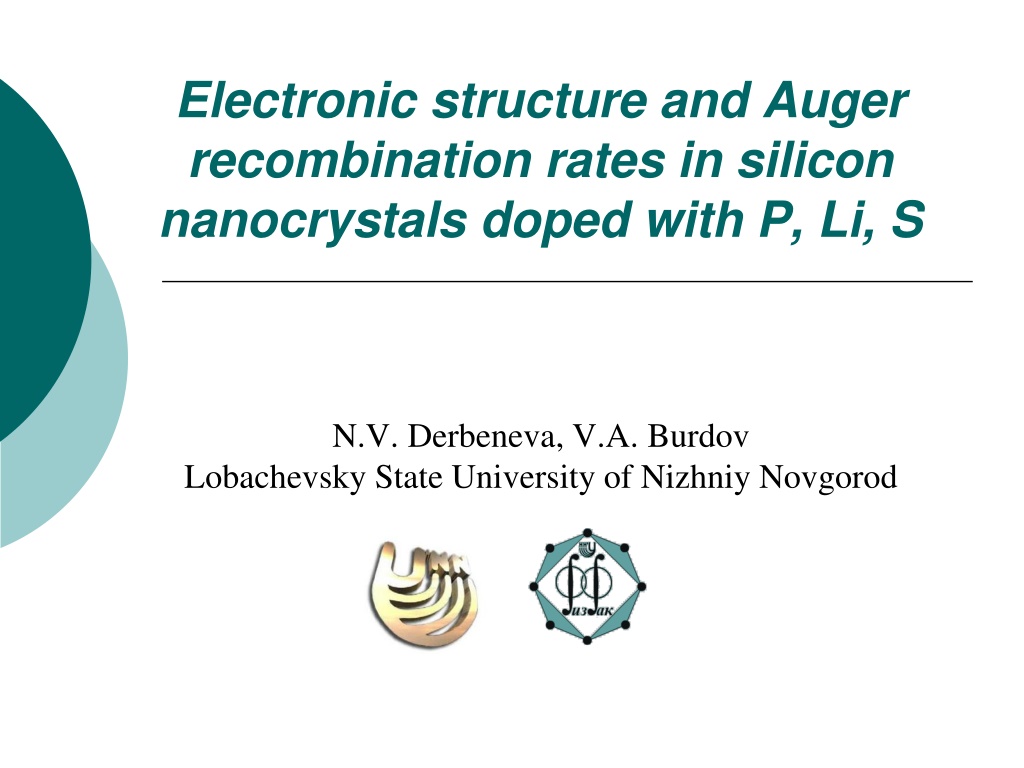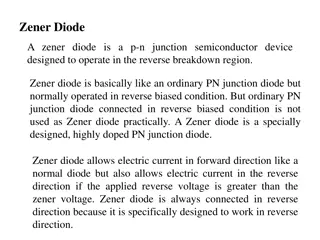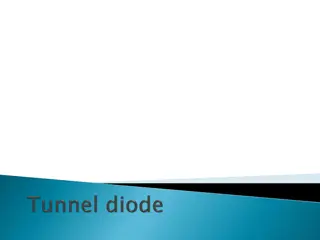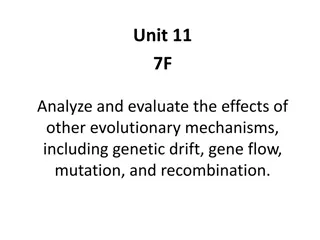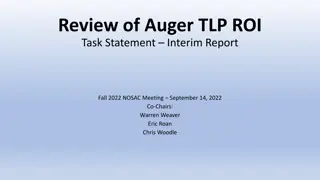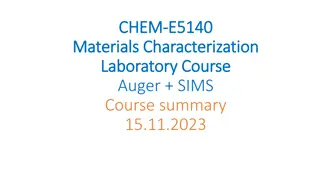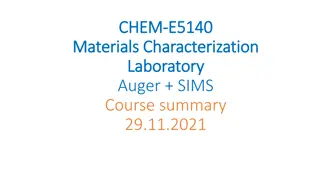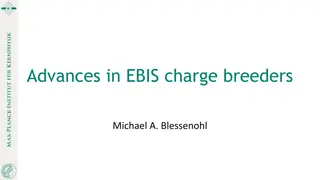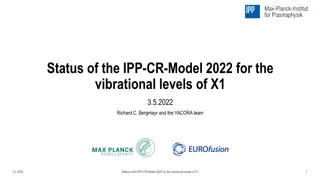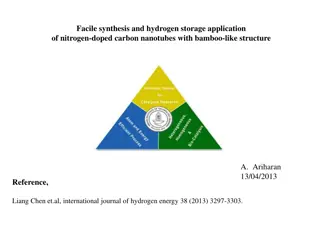Electronic Structure and Auger Recombination in Silicon Nanocrystals Doped with P, Li, S
This study investigates the electronic structure and Auger recombination rates in silicon nanocrystals doped with phosphorus, lithium, and sulfur. It includes published data on radiative recombination lifetimes, relative rates of recombination, and modeling of nanocrystal structures using computational methods. The research explores the effects of dopants on the electronic properties of silicon nanocrystals, providing insights into their potential applications in optoelectronic devices.
Download Presentation

Please find below an Image/Link to download the presentation.
The content on the website is provided AS IS for your information and personal use only. It may not be sold, licensed, or shared on other websites without obtaining consent from the author. Download presentation by click this link. If you encounter any issues during the download, it is possible that the publisher has removed the file from their server.
E N D
Presentation Transcript
Electronic structure and Auger recombination rates in silicon nanocrystals doped with P, Li, S N.V. Derbeneva, V.A. Burdov Lobachevsky State University of Nizhniy Novgorod
Published data by other authors on radiative recombination lifetimes Relative rate of the radiative recombination as a function of the dot radius at donor (P) concentration with the constant step 0.1% from 0 to 2%/ Inset shows absolute values of the rate for three Si nanocrystals with different radii indicated in the inset Calculated rates for direct radiative recombination. Panels a) and b) were calculated for NCs with different diameters V.A. Belyakov, V.A. Burdov et al. Tunnel migration in ensembles of silicon nanocrystals doped with phosphorus J. Of Phys.: Conf. Ser., V. 245, P. 012039 (2010) A.N. Poddubny, A.A. Prokofiev, and I.N. Yassievich Optical transitions and energy relaxation of hot carriers in Si nanocrystals APL, V. 97, P. 231116 (2010)
Modeling nanocrystal structure and computational method Dangling bonds on the nanocrystal s boundary were saturated with hydrogen; The relaxation of the crystal structure of the nanocluster was performed by minimizing the appropriate modules of the forces acting on each of the atoms from the other atoms using conjugate gradient method; Calculation of nanocluster s electron and hole states was performed within the density functional theory based on the self-consistent calculation of the electron density and the total energy of the system using the software package OCTOPUS; Si87H76 D=1.4 Exchange-correlation term was used in the form of generalized-gradient approximation PBE model; Vanishing wave function on the surface of the crystallite was applied as a boundary condition.
Electronic structure of Si-nc, doped with P, Li - Si - H - Li Si26Li1H32 D=1.0 n n n n ( ) ( ) n r = + + = + [ ] E T E n E F V r dr int ext HK ext Hohenberg P., Kohn W., Phys. Rev. 136, B864 (1964) Kohn W., Sham L.J., Phys. Rev. 140, A1133 (1965) Calculations were performed using the software package OCTOPUS X. Andrade et al. J. Phys.: Cond. Matt., 24, 233202 (2012).
Electronic structure of silicon nanocrystal with diameter equivalent to 1.95 nm doped with one phosphorus atom depending on its position in the crystalline Electronic structure of silicon nanocrystals doped with several phosphorus atoms (nD=2%)
Electronic structure of silicon nanocrystals doped with P, S Electronic structure of Si-nc, doped with P, S Relation between impurity energy level and the nanocrystal diameter Relation between HOMO-LUMO gap and the nanocrystal diameter
Mechanism of the Auger recombination process 1 2 2 = ( ) M E E Fermi s Golden Rule: if i f if = Mfi | f U i | Matrix element of the Auger transition: A transition condition: E = Electron-electron interaction potential: ( ) ( + ) 2 2 n n r r + ( 1) + cos 1) e n n P e E ( ) s d n n 1 2 2 R = + r r , U k g 1 2 n r r ( R 1 2 s s s d = 0 n
Auger recombination rates in pure silicon nanocrystals with diameter from 2 to 6 nm (the k-p method) Calculation was performed using electronic spectrum and wavefunctions obtained within the kp-method Eleectronic structure of silicon nanocrystals obtained within the kp-method as a function of nanocrystalline radius Delerue C., Lannoo M., Allan G. et al., Phys. Rev. Lett. 75, 2228 (1995).
Auger recombination rates for nanocrystal with diameter of 1.95 nm as a function of the phosphorus position inside the nanocrystal
Auger recombination rate in silicon nanocrystals in the presence of donors Auger recombination rates as a function of phosphorus concentration and nanocrystal diameter Auger recombination rates in nanocrystals doped with Lithium depending on the crystalline diameter
Dielectric function in silicon nanocrystals R 10.0 , N 24, pr1 1.25 1.20 SiH4 DielectricFunction 1.15 1.10 1.05 1.00 0 2 4 6 8 10 R, angstrom R, angstrom J.R. Chelikowsky et. al. PRL 90, 127401
Conclusion 1. The electronic structure calculation for silicon nanocrystals with diameters 1-2 nm was performed within density functional theory for two cases: pure crystallites and doped with P, Li, S. It was shown that the presence of the lithium atom has a significantly less strong influence on the spectrum of the nanocrystal than the presence of phosphorus which leads to a strongly cleaved singlet level, that in turn leads to a noticable decrease of the HOMO-LUMO gap of the nanocrystal. We also can see that in the presence of the lithium atom decreasing the width of the HOMO-LUMO gap of the nanocrystals also takes place. However it is much weaker and is achieved through the elimination of the triplet level. It was shown that the sulfur quite strongly modifies the electronic structure of a crystalline, resulting in reducing of the primary electron-hole junction energy by about 15 - 20% in comparison with pure nanocrystals and 10 - 15% in comparison with phosphorus-doped nanocrystals. In the presence of donor Auger recombination rate increases, and the calculations show that phosphorus has mach more influence on the Auger transition rates than lithium, which can be associated with stronger central cell potential of the phosphorus ion. 2. 3. 4.
Band strurcture near 15in bulk silicon 0.4 0.2 0 0.2 0.1 0.2 0.2 0.1 0.1 0 0 0 0.1 0.1 0.1 0.2 0.2
